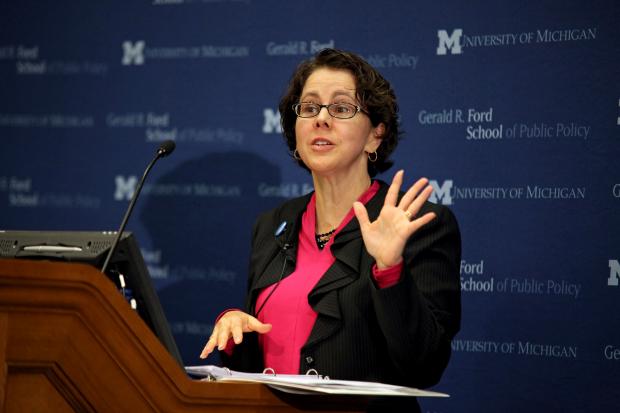Why Should We Forgive ‘Public Servants’ Student Loans? by George C. Leef
Politicians are usually eager to be generous with the money taken from taxpayers, especially when it helps them gain favor with some interest group. A good illustration is the Public Service Loan Forgiveness (PSLF) program passed in 2007.
Under PSLF, students who find jobs that are officially regarded as doing “public service” can get their college debts erased after 10 years of such work. Similar students who don’t land public service jobs can sign up for another federal program that minimizes their monthly payments, but does not wipe out their remaining debts until they’ve been paying the government back for at least 20 years.
Does this make any sense? After all, public employment often pays better than jobs calling for the same skill levels in the private sector, as Andrew Biggs and Jason Richwine have demonstrated. The notion that it’s necessary to induce people to go into “public service” with the promise of student debt relief is badly mistaken — but it will certainly be popular with those who get to escape some of their debt.
Furthermore, how can we say that some jobs involve “public service” while others don’t? That was the question bothering New America policy analyst Alexander Holt in a recent piece he wrote for CNN.
What prompted Holt to write was a statement made by Governor John Kasich at one of the Republican candidate debates: “I think we can seriously look at an idea of where you can do legitimate public service and begin to pay off some of that debt through the public service that you do.”
But exactly what counts as “legitimate public service”? Holt argues that the current policy is flawed because it rewards many high-income individuals (such as lawyers working for the government) while it excludes other people who work at least as hard and clearly serve the public.
He points to Emily Best, whose situation was highlighted in this MarketWatch piece, as an example.
Emily works on a farm and earns only $1,600 per month, which makes it a strain to cover her student debt repayments. Holt writes, “The question is whether farmers deserve PSLF because they are uniquely serving the public.”
Naturally, an organization is already pushing for inclusion of farmers in PSLF — the National Young Farmer’s Coalition. They don’t hesitate to play the usual sympathy and fear cards that help manipulate lawmakers. In a survey NYFC conducted, 30 percent of the respondents said that they hadn’t been able to expand their farms due to their student loan payments, and “nearly 6 percent said their loans drove them to quit the field.”
That’s sad, but life is full of trade-offs.
Oh, it’s more than sad, says NYFC. It could endanger our food supply. Unless we help young farmers out of student debt, we might not be able to feed ourselves. That’s the line that the sponsors of a bill to include farming under the “public service” umbrella are using.
You may be wondering why farmers need costly college degrees. Bob Young, chief economist for the American Farm Bureau Federation says that farming today is so technical that a college degree is necessary to manage the software, chemicals and other tasks on modern farms. Emily Best racked up tens of thousands of dollars in loans while pursuing a grad school degree in environmental policy with a farming focus.
The question is whether farmers couldn’t learn all they need to know without buying the whole, costly bundle of courses and experiences that comprises a college or even graduate degree. Most of our older farmers have, after all, managed to master the software, chemicals, and other things from learning they have done outside of college classrooms.
Returning to the policy debate, no doubt PSLF is both under- and over-inclusive.
Farmers certainly do serve the public by growing food, but are excluded from the “generosity” of the law.
At the same time, a good case can be made that many of the people who have managed to land “public service jobs” actually harm the public with their work—for example, the numerous lawyers in the Department of Education who busy themselves by threatening schools unless they comply with the latest federaldiktats. (The most ridiculous one this year might well be the ruling that a school must allow a “transgendered” male student to use the girls’ locker room.)
Assuming that “public service” loan forgiveness should apply to government employees, why shouldn’t it to most of the population? Holt declares, “We either all deserve a special 10-year loan forgiveness program, or none of us do.”
Between those alternatives, I pick “none of us.”
Instead of expanding Uncle Sam’s faux generosity, we should end it entirely. If we say that farmers deserve loan forgiveness because they serve the public, why not private sector health care workers? Or clergymen? Those groups “serve” their fellow man no less than workers in “public service” jobs.
All participants in a market economy “serve” in one way or another. There is no logical stopping point.
As I have often argued, it’s extremely wasteful to lure students into high-cost degree programs with easy-to-get government loans, then saddle the taxpayers with the unpaid balance when the student later defaults or manages to qualify for loan forgiveness. That artificially inflates the demand for college credentials and helps to accelerate the constant increase in the cost of higher education.
So, rather than debating which jobs will be regarded as “public service,” we ought to dispense with the idea of forgiving federal student loans at all. And that would be a good step toward the only true solution, which is to get the federal government entirely out of the business of higher education finance.
Versions of this piece first appeared at See Thru Edu and the Pope Center.
George Leef is the former book review editor of The Freeman. He is director of research at the John W. Pope Center for Higher Education Policy.



























